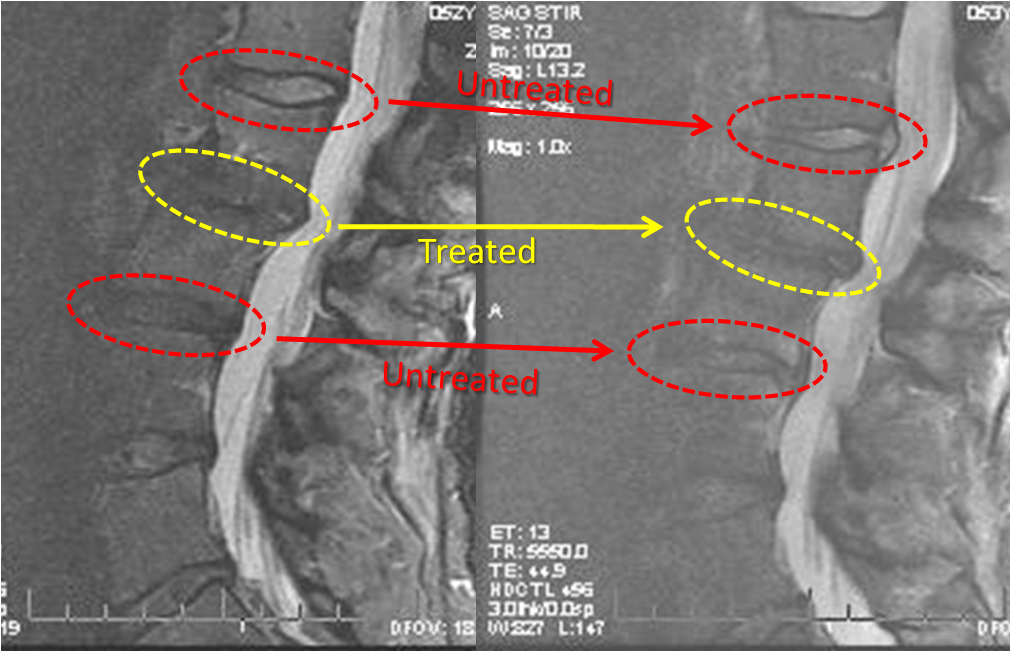Mesenchymal Stem Cells Arrest the Progression of Degenerative Disc Disease
A while back I blogged on the research paper title I have used for the title of this blog. The focus of this blog was that mesenchymal stem cells were capable of stopping degenerative disc disease from it’s usual steady progression. This morning I’d like to present an interesting 3 year plus MRI of an early study patient. WB is a very active early 50’s female runner with a severely degenerated L2-L3 disc. She was first entered into a disc study in early 2006. She received a very early iteration of the Regenexx-C disc procedure, well before any of the refinements that we later saw as necessary. However, she did receive mesenchymal stem cells into the disc, so her 3 year plus follow-up STIR MRI’s are interesting. In this case, the interest is more on what’s happening with the disc above and below the treated disc. On the left is a May 2006 MRI and on the right is a June 2009 picture. The discs circled in the red dashes were not treated, the one in the yellow dashed circles was treated. The untreated red dashed circle discs show significant progression of degenerative disc disease, with the red disc above now showing a bulge and decreased disc height. The red dashed disc below has also lost height. The treated yellow dashed circle does not look like it has progressed, if anything it looks a bit better in the three years (more defined disc space). We had previously confirmed that most of her pain was in fact coming from the L2-L3 disc. So how does the patient feel three years plus after treatment? She reports about 60% improvement with the ability to do more with less pain.
This is just one case at 3+ years after treatment. One could argue that the L2-L3 disc is so severely degenerated to begin with that it doesn’t have far to go until it’s completely obliterated, while the discs above and below are just beginning that degenerative cascade. On the converse, we should be seeing larger bone spurs at the L2-L3 disc by this time with no defined disc space and advancing pain. A case of one patient is just that, one person’s long-term experience. Will keep you updated as we get more long-term data on disc patients, especially those that have received newer iterations of the Regenexx-C disc procedure.
This patient was treated with the Regenexx-C (cultured stem cell injections).

If you have questions or comments about this blog post, please email us at [email protected]
NOTE: This blog post provides general information to help the reader better understand regenerative medicine, musculoskeletal health, and related subjects. All content provided in this blog, website, or any linked materials, including text, graphics, images, patient profiles, outcomes, and information, are not intended and should not be considered or used as a substitute for medical advice, diagnosis, or treatment. Please always consult with a professional and certified healthcare provider to discuss if a treatment is right for you.

